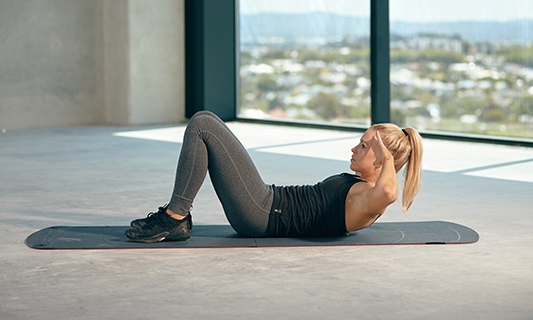How to navigate life’s challenges and maintain your fitness levels

Finnish scientists have found that what’s going on in your personal life can have a surprising effect on your physical activity levels. These findings come from a University of Jyväskylä study tracking the total step count and aerobic step count (aerobic steps are longer periods of movement with a rate of 60 steps per minute) of middle-aged men and women as they navigate major life-changes – marriage, divorce, moving house, having a child or changing job.
Women were most likely to see life changes impact their activity levels. In particular, the birth of the first child significantly reduced the number of everyday steps women took. Interestingly, men who divorced showed a decrease in physical activity over the four years, but women who divorced increased their steps. Moving from the city to the countryside reduced the overall steps and everyday steps of women, but no similar effect was observed for men.
This study brings awareness to the importance of proactively maintaining activity levels regardless of what else is going on in life. Regular structured exercise is important, but thanks to the science of Non-Exercise Activity Thermogenesis, we now know that being active in between workouts can have more impact on your fitness than you realize. “To increase your number of steps, you may not have to exercise separately each day,” advises postdoctoral researcher Kasper Salin. “Instead, attention should be paid to everyday choices and, for example, choose stairs instead of the elevator or walk to the store instead of driving."
Which ab exercises will reduce your waistline?

The truth is … ab exercises alone will never dissolve fat in your midsection! A new study published in the Journal of Strength and Conditioning Research provides even more evidence that you can’t spot train fat away from your waist. The findings come after researchers put a group of fit and healthy men through a six-week program of sit-ups, leg lifts, crunches, and stability ball movements. Their body composition and abdominal muscular endurance were tested before and after the training and they found no significant effect on body weight, body fat percentage, android fat percentage, android fat, abdominal circumference, and skinfold measurements.
Basically, the abdominal training was great for increasing abdominal strength, but was not effective to decrease various measures of abdominal fat. Experts hope these findings help more people understand that abdominal exercise alone is not sufficient to reduce your waistline or subcutaneous abdominal fat. “If you want to trim your waistline, you’re far better off doing something to shed body fat,” says Bryce Hastings, Les Mills Head of Research. He adds that a high-intensity interval training workout like LES MILLS GRIT™ is scientifically-shown to carve inches off your waistline.
Physical activity: The optimal dose for heart health

We all know exercise bolsters heart health. But it’s often asked: can too much exercise be detrimental? Now, a large-scale study has shown physical activity is twice as beneficial as previously thought, and there are no upper limits to the benefits.
Studying 90,000 men and women, researchers found those who moved the most showed no increased risk for heart problems – in fact, they enjoyed the greatest risk reductions. These individuals typically worked out intensely for 50 minutes or more a week, walking as much as 1,100 minutes a week (this total includes their actual exercise and everyday activities like grocery shopping or doing housework).
While this amount of activity was optimal, it is clear that any amount of physical activity seems to be good for cardiovascular health – even just a few minutes of walking each day.
Lead researcher, Dr. Terence Dwyer from the University of Oxford, says these new findings provide the strongest evidence yet that vigorous physical activity is important for reducing the risk of cardiovascular disease. He says the benefits were “about double what had been found with most self-report studies.”
Dr. Dwyer does point out that the number of study participants who completed extremely high amounts of vigorous exercise was small, so the long-term effects of extreme intensity may require more scrutiny. However, he says that for most of us, increasing our exercise “to much higher levels or more vigorous levels” should substantially reduce heart disease risk later in life.
The facts about how fitness trackers fuel fitness
![]()
Do fitness trackers and smartphone apps really motivate you to become more active? According to a new review published in the British Journal of Sports Medicine, the answer is … Yes. This finding comes after researchers delved into the details of 28 studies and reviewed data from more than 7,400 adults who used fitness trackers or apps for more than three months. They found that, when compared to those who went device-free, those who used the devices increased their activity by 1,850 steps per day. The researchers point out that the trackers and apps that use prompts to help people stay active appear to be the most effective.








